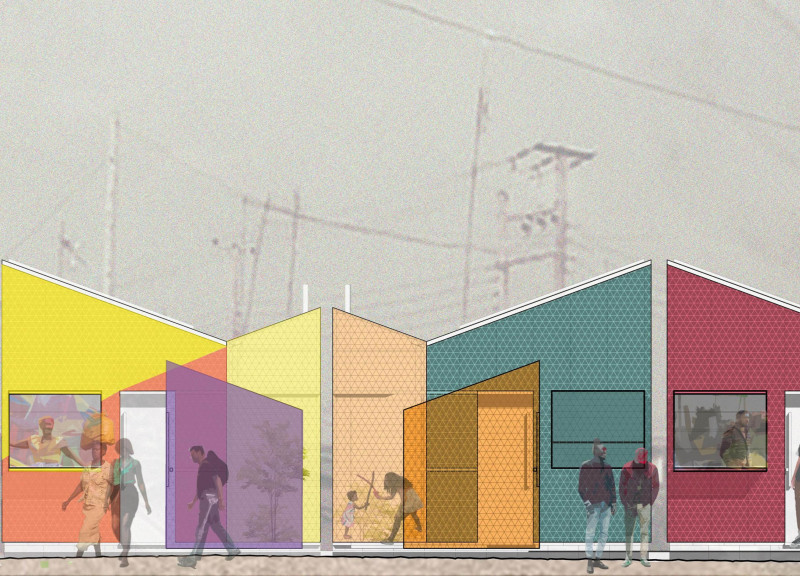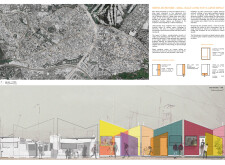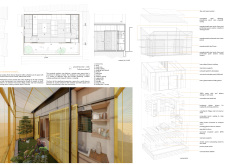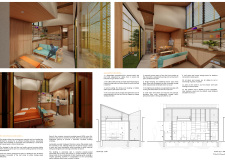5 key facts about this project
Efficient Space Utilization and Functionality
This microhome design occupies a modest footprint of 25 square meters, integrating flexible layouts that respond to varying user needs. The interior is characterized by multifunctional spaces, including a retractable bed and adaptable furnishings that cater to the dynamic lifestyles of residents. Natural light plays a critical role in the design, achieved through strategically placed windows and skylights, reducing reliance on artificial lighting. Outdoor spaces are effectively incorporated, allowing for gardening and community interaction while maintaining a separation of private and public areas.
Unique Design Approaches
At the core of this project is the application of sustainable materials and construction methodologies. The use of structural insulated panels (SIPs) enhances thermal performance and structural integrity, a vital consideration in an area with challenging climatic conditions. Powder-coated steel frames and corrugated steel roofing ensure durability and low maintenance costs. Furthermore, eco-friendly systems are integrated into the design, including rainwater harvesting for resource management and solar panels for energy generation.
Community Integration and Socio-Economic Impact
The architectural design reflects a strong commitment to community integration. Shared spaces, such as markets and communal gardens, foster social cohesion and economic opportunities for residents. This approach not only addresses immediate housing needs but also promotes a sense of ownership and pride within the community. The incorporation of waste management solutions, such as composting systems, further supports sustainable living practices and enhances overall environmental quality.
Explore the project presentation to gain deeper insights into its architectural plans, sections, designs, and ideas. This examination will offer a comprehensive understanding of how innovative design principles are employed to create functional and sustainable housing solutions.


























